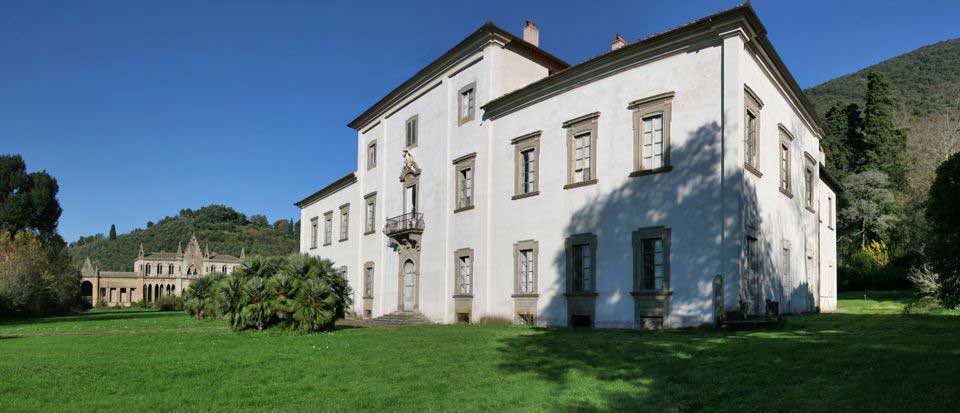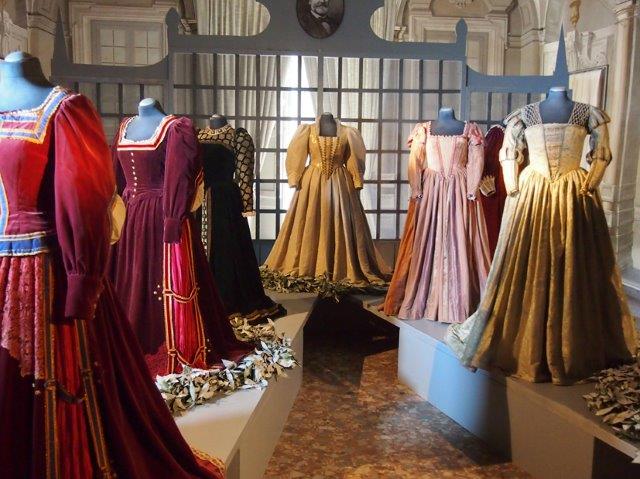
Villa Roncioni
This post is also available in:
 Italiano (Italian)
Italiano (Italian)
In 1468, Guelfo Roncioni signed the deed of purchase of the property in the locality of Pugnano, a hamlet of the municipality of San Giuliano Terme (Pisa). About a hundred years later, a building used as a farmhouse-farm was recorded in the cadastral documents, smaller in size than the current villa, but with some features that have been preserved to this day, such as the main staircase.
It was only in the XVIII century that this agricultural facility and occasional hunting residence was transformed into a real villa, under the guidance of the architect Francesco Roncioni.
Since 3 December 2011, Villa Roncioni has been the headquarters of the Cerratelli Foundation, which collects the legacy of the famous art house from Florence, consisting of about twenty-five thousand costumes and twenty thousand film posters, set photos, artworks and sketches – along with with “Galleria del costume di Palazzo Pitti”, it is the largest collection in the world.
THE VILLA
Between 1747 and the early XIX century, when the villa became the home of Francesco Roncioni, the restoration work on the estate began: the cellars and warehouses were moved elsewhere, while a wing was added and the facade was redesigned. Among the architects involved, there were Antonio Niccolini and Pasquale Cioffo, Italian professionals and decorators of neoclassical taste; the pictorial decoration, on the other hand, was supervised by the painters Giovanni Battista Tempesti and Giuseppe Bacchini, who created false perspectives and mythological scenes in full Rococo style.
A real jewel linked to proto-industrial activities is the neo-Gothic style pavilion of the “bigattiera”, built in 1822 by Francesco Roncioni to house a silkworm farm and silk spinning mills.
THE GARDEN
Towards the middle of the XIX century, the large English park was created all around the villa, also connecting the property of the neighbouring Villa del Vollia. The family chapel was part of the romantic structures scattered throughout the park, built by reusing materials from the remains of old sepulchral arks, a castle (which had remained unfinished), a waterfall, a lake and an artificial cave with a barrel vault covered with semiprecious stones, mother of pearl and shells.
This post is also available in:
 Italiano (Italian)
Italiano (Italian)
Contatti
San Giuliano Terme(PI)
grupporosellini@yahoo.it


